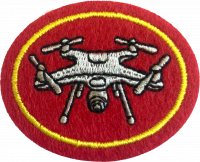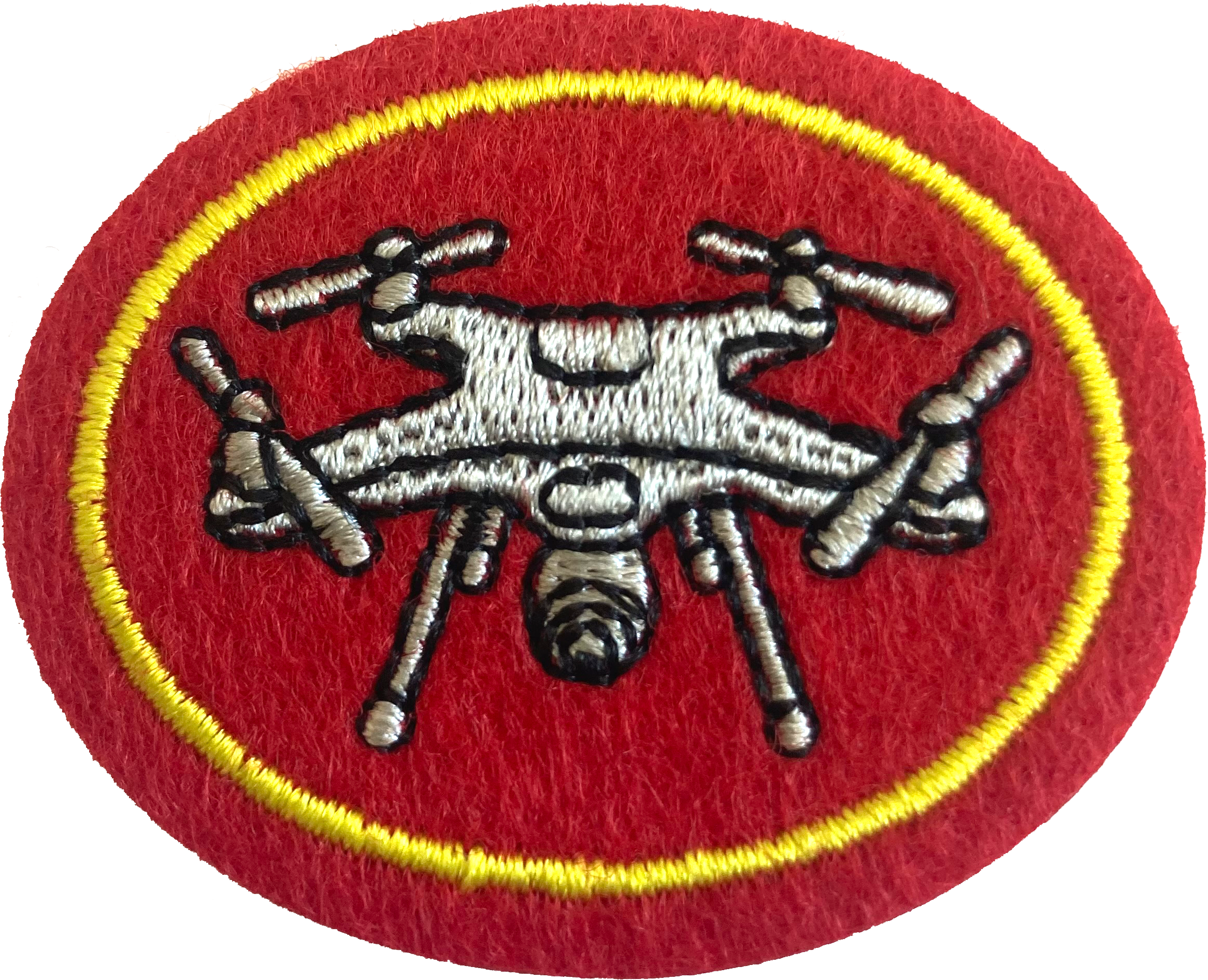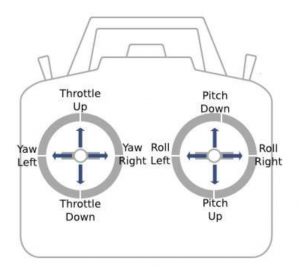Respuestas para la especialidad JA de Drones
1
Breakthroughs in transistor technology during the 1960s, enabled radio-controlled components to be miniaturized enough to be sold to civilian customers at a reasonable cost. This led the way for adoption of remote controlled, non-piloted, vehicles by hobbyists (individuals flying for fun, non-commercial and non-military purposes). 1990-2010 was a pivotal period for military and civilian drone development, with the introduction of mini and micro versions of UAVs in 1990. The last 10 years have seen a huge explosion in drone innovation and commercial interest. While prior to this, drones were primarily used for military purposes or hobbyists, beginning in the early-2010s, a host of new applications for drone technology emerged.
Based on their weight, drones can be classified into five categories — nano (weighing up to 250 g/ 0.55 lbs), Micro air vehicles (MAV) (250 g - 2 kg / less than 4.4 lbs), Miniature UAV or small (SUAV) (2-25 kg/55 lbs), medium (25-150 kg), and large (over 150 kg/330 lbs). Drones are also classified by the application or use of the drone. For example:
2
2a
2b
2c
2d
2e
2f
2g
For photos and video footage, cameras are attached to the drone. Cameras with the capability of shooting and storing or sending videos are available. Some drones allow the pilot to control camera functions, for example: zoom and up or down movement, using the remote control transmitter.
3
4
FAA Guidelines - Following these rules will keep people, your drone and the national airspace safe:
- Take The Recreational UAS Safety Test (TRUST) from the FAA and carry proof of test passage. The FAA's TRUST test is FREE and is required for all recreational drone operators in the USA. There is no age limit to fly a drone for sport or recreation.
You can visit the Academy of Model Aeronautics (AMA) TRUST website and follow the steps to complete TRUST. - If your drone weighs more than .55 lbs, register your drone through the FAA's DroneZone.
- Fly only for recreational purposes (enjoyment).
- Follow the safety guidelines of an FAA-recognized Community Based Organization (CBO).
Note: Recreational flyers are directed to follow the safety guidelines of existing aeromodelling organizations or use the FAA provided safety guidelines per Advisory Circular 91-57B. - Keep your drone within the visual line of sight or use a visual observer who is colocated (physically next to) and in direct communication with you.
- Give way to and do not interfere with manned aircraft.
- Fly at or below 400 ft.
- Have a current registration, mark (PDF) your drones on the outside with the registration number, and carry proof of registration with you. You can register your drone with the FAA on this site.
- Do not operate your drone in a dangerous manner. For example:
- Do not interfere with emergency response or law enforcement activities.
- Do not fly under the influence of drugs or alcohol.
Individuals violating any of these rules, and/or operating in a dangerous manner, may be subject to FAA enforcement action up to and including fines.
5
Take TRUST in three steps
- Go to the TRUST Model Aircraft website and follow the steps to take the free online test.
- It will take about half an hour to finish. There are reading materials and four quizzes.
- After completing TRUST, you will need to download, save or print your completion certificate.
Note:
- If you lose your certificate, you will need to retake TRUST.
6
6a
A drone that has the highest flight time and lowest wait for the battery to charge. It's a good idea to purchase some extra batteries and keep them charged when you go out flying. That way, when the drone does run out of power, you can simply swap the battery and increase your flying time.
6b
Most drones either come with a camera of their own or the ability to mount an external camera.
6c
Purchase a few spare parts at the same time as the drone so that you have them when you need them. Crashing a drone is a very real possibility and you should plan for such occurrences. Some of the most important spare parts include the propellers, landing gear, motors, batteries, and controllers.
6d
You will most likely want to fly your drone outdoors and built-in GPS navigation helps the drone find its way around. Drones with a GPS module typically record where they began flying from and will automatically return if there's a problem or connection with the remote transmitter occurs. This adds to the cost of the drone but is a good investment when purchasing a drone for outdoor flying.
6e
The retailer you choose does make a difference. While most electronics stores sell some drones, not all retailers are created equal. Some online retailers have a liberal return policy so that if you make the wrong choice, it’s easily returned. Some reliable retailers are: Amazon, BestBuy, B&H Photo, DJI, Flite Test, and HobbyKing.
eBay has matured well beyond simply selling used products, but shop wisely, consider the vendor, their location and their return policies, then make sure that your purchase is still eligible for factory warranty. You can find almost any drone on eBay, just start your search and get ready to fly.
7
Use your favorite internet search engine or CelDrones.com to find videos and photos of drones in use in six commercial (non-military) applications.
Be prepared to show them to your Pathfinder Club coordinator.
8
9 “For as the heavens are higher than the earth,
So are My ways higher than your ways, And My thoughts than your thoughts.
10 “For as the rain comes down, and the snow from heaven, And do not return there, But water the earth, And make it bring forth and bud, That it may give seed to the sower And bread to the eater, 11 So shall My word be that goes forth from My mouth; It shall not return to Me void, But it shall accomplish what I please,
And it shall prosper in the thing for which I sent it.
9
10
| Throttle up | Drone flies upwards |
| Throttle down | Drone fliesdownwards (also used to land the drone) |
| Yaw left | Drone flies left (reversed if the front of the drone faces you) |
| Yaw right | Drone flies right (reversed if the front of the drone faces you) |
| Pitch down | Drone flies forward (reversed if the front of the drone faces you) |
| Pitch up | Drone flies backward (reversed if the front of the drone faces you) |
| Roll left | Drone rotates 360-degrees clockwise |
| Roll right | Drone rotates 360-degrees counterclockwise |
What you will need to complete this requirement
- Complete the review of the tutorial video on YouTube.
- Copy of your FAA TRUST certificate or its equivalent to show to your Pathfinder club coordinator.
- A drone. If you have not bought a drone yet, use the drone provided by your Pathfinder club.
- A portable foldable drone landing pad for RC drones - Universal Waterproof 75 cm/30 inch prepared by your Pathfinder club coordinator.
- Secure the portable foldable drone landing pad to the ground, either with the stakes or a heavy object placed on the three tabs. The center of the landing pad should be 4-6 feet away from the place where the drone pilot will stand. Portable foldable drone landing pad for RC drones (Universal Waterproof 75 cm/30 inch) is available through online retailers like Amazon.
10a
- Place the drone on the blue dot/center of the portable foldable drone landing pad, with the front of the drone facing away from the pilot.
- Consult the user guide for the drone to learn how to power-up the remote control transmitter and the drone to get the drone in the air.
- Follow all safety procedures learned when you completed the requirement for the 10 most important safety procedures for recreational drone operators.
- Once airborne, the only control you need for this step is the throttle on the remote control transmitter. Push the throttle (left stick) up very slowly until the drone reaches eye-level altitude (height above the ground) over the blue dot/center of the portable foldable drone landing pad.
- Stop, release the throttle, and let the drone hover for 1-2 mins. Gently pull the throttle down to the lowest point and let the drone land.
- Release the throttle when the propellers stop spinning.
Repeat this multiple times and until you are comfortable with the remote control transmitter throttle's sensitivity.
10b
- Follow the steps to take-off and hover the drone at eye-level altitude over the blue dot/center of the portable foldable drone landing pad.
- Gently (very slight movement of the fingers) push the right stick on the remote control transmitter forward to fly the drone a couple of feet forward.
- Stop, release the stick and allow the drone to hover for 1-2 mins.
- Gently (very slight movement of the fingers) pull the right stick on the remote control transmitter backwards to return the drone (reverse flight) to its original position, over the blue dot/center of the portable foldable drone landing pad.
- Stop and let the drone hover for 1-2 mins.
- Gently pull the throttle down to the lowest point and let the drone land.
- Release the throttle when the propellers stop spinning.
Pro tip: When you move in either direction, you will probably notice the drone dropping in altitude. To keep the drone at the same altitude (eye-level), very gently push the throttle up and give it more power whenever you turn or move.
10c
- Follow the steps to take-off and hover the drone at eye-level altitude over the blue dot/center of the portable foldable drone landing pad.
- Gently (very slight movement of the fingers) push the left stick on the remote control transmitter to the left to fly the drone a couple of feet to the left.
- Release the stick and allow the drone to hover for 1-2 mins.
- Gently (very slight movement of the fingers) pull the left stick on the remote control transmitter to the right to return the drone to its original position, over the blue dot/center of the portable foldable drone landing pad.
- Stop, release the throttle and let the drone hover for 1-2 mins.
- Gently (very slight movement of the fingers) push the left stick on the remote control transmitter to the right to fly the drone a couple of feet to the right.
- Release the stick and allow the drone to hover for 1-2 mins.
- Gently (very slight movement of the fingers) pull the left stick on the remote control transmitter to the left to return the drone to its original position, over the blue dot/center of the portable foldable drone landing pad.
- Release the stick and allow the drone to hover for 1-2 mins.
- Gently pull the throttle down to the lowest point and let the drone land.
- Release the throttle when the propellers stop spinning.
Get comfortable taking-off, flying the drone forward/reverse, left/right, and landing the drone.
10d
- Follow the steps to take-off and hover the drone at eye-level altitude over the blue dot/center of the portable foldable drone landing pad.
- Gently (very slight movement of the fingers) push the right stick on the remote control transmitter to the left to slowly fly the drone in a 360-degree counterclockwise rotation. Return the drone to its original position, the back of the drone facing you.
- Release the stick and allow the drone to hover for 1-2 mins.
- Gently (very slight movement of the fingers) push the right stick on the remote control transmitter to the right to slowly fly the drone in a 360-degree clockwise rotation. Return the drone to its original position, the back of the drone facing you.
- Release the stick and allow the drone to hover for 1-2 mins.
- Gently pull the throttle down to the lowest point and let the drone land.
- Release the throttle when the propellers stop spinning.
Pro tip: When you move in either direction, you will probably notice the drone dropping in altitude. To keep the drone at the same altitude (eye-level), very gently push the throttle up and give it more power whenever you turn or move.



